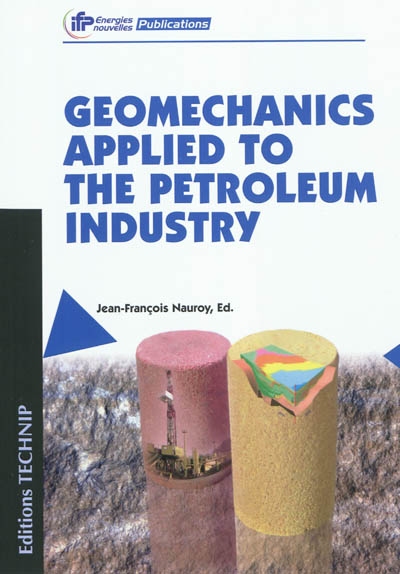en savoir plus

Permet à tous ses détenteurs d'obtenir 5% de réduction sur tous les livres lors du retrait en magasin (réduction non cumulable avec les réductions de type étudiant).
Offre également un certain nombre d'avantages auprès de nos partenaires.
Avec les favoris, retrouvez dans un espace les sélections effectuées au fur et à mesure de vos navigations dans le site.
Constituez pour votre usage personnel vos listes de livres en prévisions d'achats futurs et votre sélection d'articles, dossiers, événements, vidéos ou podcasts préférés ou à découvrir plus tard...
Il suffit simplement de cliquer sur "Ajout Favori" sur chaque page qui vous intéresse pour les retrouver ensuite dans votre espace personnel.
Requiert un compte Mollat
Requiert un compte Mollat
Geomechanics applied to the petroleum industry
en savoir plus
Résumé
Etude de la mécanique des sols pour l'industrie pétrolière en trois parties. La 1re partie donne des informations sur la mécanique et les caractéristiques des roches, et les modèles mécaniques de leurs comportements. La 2e partie aborde le rôle de la mécanique des sols pour le forage et la production. La 3e partie traite du rapport entre la production de fluides et la déformation mécanique. ©Electre 2025
Quatrième de couverture
Geomechanics applied to the petroleum industry
Designing an efficient drilling program is a key step for the development of an oil and/or gas field. Variations in reservoir pressure, saturation and temperature, induced by reservoir production or CO2 injection, involve various coupled physical and chemical processes.
Geomechanics, which consider all thermohydromechanical phenomena involved in rock behavior, play an important role in every operation involved in the exploitation of hydrocarbons, from drilling to production, and in CO2 geological storage operations as well. Pressure changes in the reservoir modify the in situ stresses and induce strains, not only within the reservoir itself, but also in the entire sedimentary column. In turn, thèse stress variations and associated strains modify the fluids flow in the reservoir and change the wellbore stability parameters.
This book offers a large overview on applications of Geomechanics to petroleum industry. It presents the fundamentals of rock mechanics, describes the methods used to characterise rocks in the laboratory and the modelling of their mechanical behaviour ; it gives elements of numerical geomechanical modelling at the site scale.
It also demonstrates the role of Geomechanics in the optimisation of drilling and production : it encompasses drillability, wellbore stability, sand production and hydraulic fracturing ; it provides the basic attainments to deal with the environmental aspects of heave or subsidence of the surface layers, CO2 sequestration and well abandonment ; and it shows how seismic monitoring and geomechanical modelling of reservoirs can help to optimise production or check cap rock integrity.
This book will be of interest to all engineers involved in oil field development and petroleum engineering students, whether drillers or producers. It aims also at providing a large range of potential users with a simple approach of a broad field of knowledge.
Fiche Technique
Paru le : 06/08/2011
Thématique : Matériaux
Auteur(s) : Non précisé.
Éditeur(s) :
Technip
Institut français du pétrole
Collection(s) : IFP-Institut français du pétrole publications
Contributeur(s) : Editeur scientifique (ou intellectuel) : Jean-François Nauroy - Préfacier : Maurice Bouteca
Série(s) : Non précisé.
ISBN : 978-2-7108-0932-6
EAN13 : 9782710809326
Reliure : Broché
Pages : XVI-198
Hauteur: 24.0 cm / Largeur 17.0 cm
Épaisseur: 1.4 cm
Poids: 420 g

